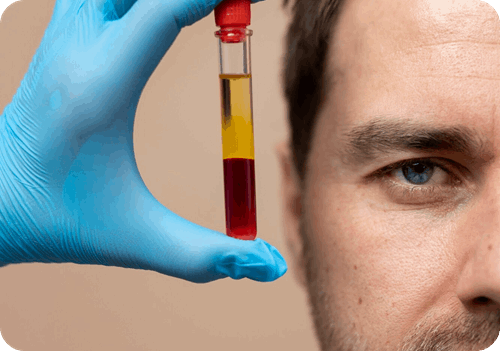Joint health is integral for maintaining mobility and overall quality of life. Platelet-rich plasma (PRP) therapy is a treatment that supports joint health and aids recovery from various conditions. Here is more information on what this therapy entails, its applications, and its potential benefits for joint health:
What Is PRP Therapy?
PRP therapy is a treatment that utilizes a patient’s own blood to promote healing. The process isolates a portion of the blood rich in platelets, which contain growth factors, helping to enhance tissue repair and regeneration. The treatment is used in various fields, including pain management, and has applications in joint health. By harnessing natural components from blood, PRP offers a non-surgical approach to injury recovery and maintenance of function.
What Does It Involve?
PRP therapy begins with a blood sample drawn from the patient. The sample is processed in a centrifuge, separating the platelet-rich plasma from other blood components. This concentrated plasma is then injected directly into the affected area. The procedure is administered in a clinical setting, and recovery is minimal.
What Conditions Does It Treat?
PRP therapy is used to treat conditions that affect joint mobility and comfort. These include:
- Arthritis: PRP injections may target inflammation and encourage joint tissue repair.
- Ligament injuries: Common in sports injuries, these benefit from PRP’s focus on soft tissue recovery.
- Tendinitis and tendinosis: Chronic or acute inflammation of tendons might respond to PRP.
- Plantar fasciitis: This painful condition affecting the foot may benefit from targeted treatment.
- Arthrofibrosis: PRP addresses joint stiffness from excessive scar tissue.
- Meniscal injury: Common in the knee, meniscal tears may benefit from potential support through tissue repair.
- Chronic synovitis: Treatment could address the ongoing inflammation of the joint linings.
Each case is unique, meaning outcomes vary depending on the condition and patient factors.
What Affects Joint Health?
Maintaining healthy joints involves a combination of lifestyle choices and underlying factors. Physical activity is integral for joint function. Low-impact exercises, such as swimming or cycling, can maintain mobility and reduce strain. A balanced diet rich in calcium and omega-3 fatty acids supports cartilage and surrounding tissue.
Age and genetics influence joint health as well. With age, cartilage may naturally degrade, while some individuals may have a genetic predisposition to conditions like osteoarthritis. Injuries from sports or work-related activities impact joint integrity. Chronic inflammation or untreated injuries can also lead to long-term joint issues.
How Does PRP Benefit Joint Health?
PRP therapy addresses joint-related issues by targeting the healing process. Platelets in PRP release growth factors that support tissue repair and reduce inflammation. These effects may facilitate recovery in ligaments, tendons, and cartilage. By addressing inflammation and promoting regeneration, PRP helps mitigate some of the wear and tear associated with aging or injury.
Its application to joints focuses on promoting the natural healing response. When administered by a healthcare professional, PRP may complement efforts to enhance joint functionality. PRP also helps alleviate symptoms and improve mobility in chronic conditions, such as osteoarthritis.
Improve Your Joint Health Now
PRP therapy plays a beneficial role in addressing joint concerns and enhancing overall joint health. By utilizing natural components in the body, it complements a broader strategy for maintaining mobility and reducing discomfort. Whether recovering from an injury or managing chronic issues, exploring this therapy as part of a comprehensive wellness approach may be worthwhile. For more information about this treatment, connect with a professional and take the first step toward supporting healthy, functional joints.

